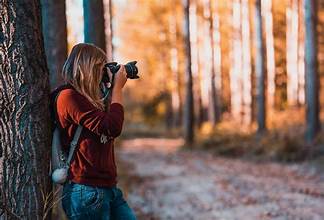Photography is a fascinating and creative hobby that allows you to capture moments, tell stories, and express yourself through images. Whether you’re interested in taking photos with your smartphone or investing in a professional camera, this beginner’s guide will help you get started on your photographic journey.
Understanding Your Camera
Before you start taking pictures, it’s essential to familiarize yourself with your camera. Whether you’re using a smartphone, a point-and-shoot, or a DSLR, learn about its basic functions, settings, and how to handle it safely. Explore the camera’s modes, including auto, manual, and semi-automatic options.
Composition and Framing
Composition is the art of arranging elements within your frame to create visually appealing images. Some essential composition techniques include the rule of thirds, leading lines, symmetry, and framing. Experiment with these to capture more engaging photographs.
Lighting
Light is a fundamental element in photography. Understand how different types of light, such as natural, artificial, and various sources, affect your images. Learn to work with light to create mood, texture, and depth in your photos.
Exposure
Exposure refers to how light or dark your photos are. Master the exposure triangle, which includes aperture, shutter speed, and ISO settings. Adjusting these settings allows you to control the amount of light that enters the camera and achieve the desired exposure.
Focus
Understanding focus is crucial for sharp and clear photos. Most cameras offer auto-focus and manual focus options. Learn when to use each and experiment with selective focus for creative effects.
White Balance
White balance ensures your photos have accurate colors. Different lighting conditions can make your images appear too warm or too cool. Adjust the white balance settings to match the light source and maintain natural colors.
Shooting Modes
Cameras offer various shooting modes, including auto, portrait, landscape, and more. Each mode is designed for specific situations and subjects. Experiment with these modes to see how they affect your photos.
Post-Processing
Editing your photos can significantly enhance their quality. Use photo editing software like Adobe Lightroom or mobile apps to adjust exposure, contrast, color, and other elements. But remember, the best photos start with good in-camera techniques.
Storytelling
Photography is not just about taking pictures; it’s about telling a story or conveying an emotion. Think about the message you want to convey in your photos and use composition, lighting, and subject matter to support your narrative.
Practice
Photography is a skill that improves with practice. Don’t be discouraged by early mistakes. Take as many photos as you can, experiment with different techniques, and review your work to identify areas for improvement.
Learn from Others
Study the work of professional photographers and other enthusiasts. Look for inspiration and new ideas to expand your creative horizons. Join photography forums, communities, and clubs to share your work and receive feedback.
Equipment
While great photos can be taken with any camera, understanding different types of equipment, like lenses, tripods, and filters, can help you take your photography to the next level. Explore your options and invest in gear that suits your interests.
Conclusion
Photography is a rewarding and creative hobby that allows you to capture the world around you in unique ways. This beginner’s guide has introduced you to the essential aspects of photography, from camera basics to composition, lighting, and post-processing. As you embark on your photographic journey, remember that practice and patience are key to improving your skills and creating beautiful, memorable images. Enjoy the process, and let your passion for photography drive your artistic expression.
Thank You : masculinebrain




